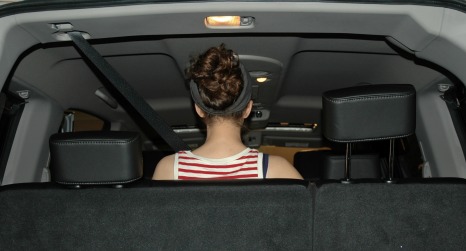A head restraint will protect your spine and neck during a crash. When a vehicle is struck from the rear and pushed forward, the vehicle seats push the occupants forward as well. Due to the physics of your body, your head will likely lag behind the movement of your torso, which causes your neck to bend back and stretch. This motion is commonly called whiplash, and while not life-threatening, whiplash can be quite painful and debilitating.
Neck injuries like whiplash are the most serious injury reported in 2 million insurance claims per year, which cost over $8.5 billion per year. Neck injuries are the most common type reported in crashes and occur most often in rear end impacts. Most rear end impacts occur in stop and go traffic in suburban and urban areas. Women are especially at risk for whiplash, as they often drive in these conditions in vehicles with poor head restraint protection, like minivans.
To prevent whiplash, the head restraint and vehicle seat need to work together to support your body during a crash. The head restraint must support the head and push it forward with the torso; the seat needs enough ‘give’ to allow occupants to sink into it and thus move closer to the head restraint.

In this photo, Emily is at high risk for whiplash and other neck injuries due to the lack of a head restraint in her seating position–the center of the third row in a 2011 Nissan Armada. In a crash, nothing would support her head. Emily would be better protected in one of the side positions, since these have head restraints, but as is evident from the photo, in the highest setting the restraints come up barely past her ears. A taller person–and most adults and many teens are taller than Emily, who is 5’3″–would not be safe even with the head restraint.
Head restraint performance tests
More about head restraints